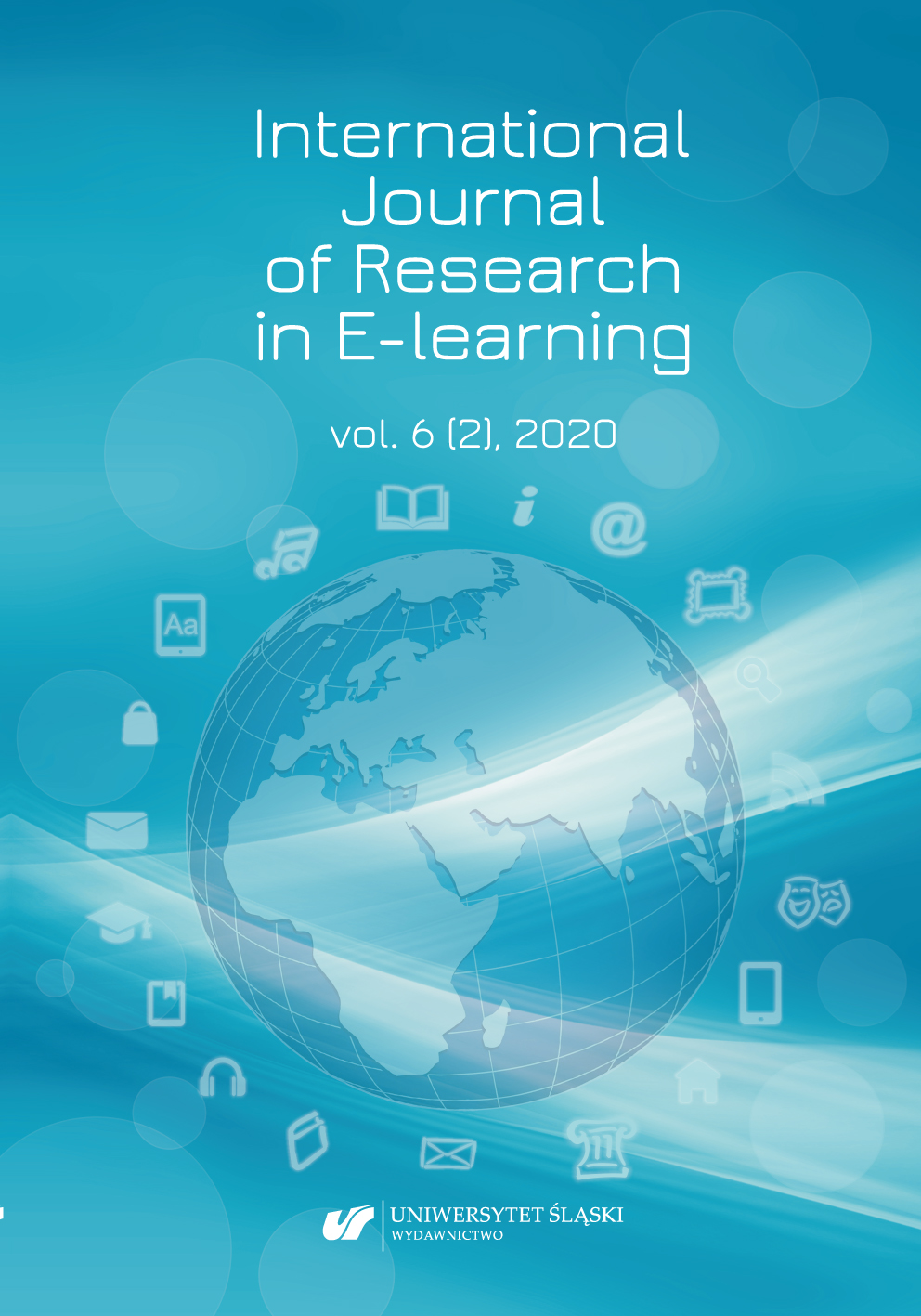Banach, Cz. (2012). Wyzwania i zadania polskiej edukacji w latach 2012–2025 [Challenges and tasks of Polish education in 2012–2025]. In K. Denek, A. Kamińska, W. Łuszczuk, & P. Oleśniewicz (Eds.), Edukacja Jutra. Polityka, aksjologia i kreatywność w edukacji jutra [Education of tomorrow. Politics, axiology and creativity in education of tomorrow] (pp. 23–33). Wyższa Szkoła Humanitas.
Google Scholar
Bednarek, J., & Lubina, E. (2008). Kształcenie na odległość. Podstawy dydaktyki [Distance learning. Foundations of didactics]. Państwowe Wydawnictwo Naukowe.
Google Scholar
Heba, A., Smyrnova-Trybulska, & E., Kapounová, J. (2017). Objectives and content of the mathematics e–learning course preparing students for the school–leaving exam in mathematics. International Journal of Research in E–learning 3(1), 109–124.
Google Scholar
Iwasiewicz, M. (2011/2012). Tablica interaktywna w realizacji wybranych wymagań podstawy programowej [Interactive board in the implementation of selected requirements of the core curriculum]. Język Polski w Gimnazjum [Polish language in Junior High School] 4, 43–66.
Google Scholar
Kołodziejczak, T., & Zieliński, J. (1995). Podstawy informatyki [Basics of computer science]. Wydawnictwo Prószyński i Spółka.
Google Scholar
Kupisiewicz, M. (2013). Tablica interaktywna [Interactive board]. In M. Kupisiewicz (Ed.), Słownik pedagogiki specjalnej [Dictionary of Special Pedagogy] (pp. 15–24). Państwowe Wydawnictwo Naukowe.
Google Scholar
Majewska, K. (2013). Tablica interaktywna w procesie nauczania [Interactive board in the teaching process]. Wychowanie na co dzień [Everyday education] 6, 28–31.
Google Scholar
Mamroł, A. (2018). Tablica interaktywna w pracy współczesnego nauczyciela szkoły podstawowej [Interactive board in the work of a modern primary school teacher]. Edukacja – Technika – Informatyka [Education – Technology – Computer Science] 1, 144–153.
Google Scholar
Miernik, J., & Piasta-Siechowicz, J. (2008/2009). Tablica interaktywna w dydaktyce szkolnej na lekcjach języka polskiego [Interactive board in school didactics during a Polish language lesson]. Język Polski w Szkole IV–VI [Polish Language at School for grades IV–VI] 4, 15–18.
Google Scholar
Morze, N., Makhachashvili, R., & Smyrnova–Trybulska, E. (2016). The roadmap of collaboration skills from programmed teaching to e–learning. International Journal of Research in E–learning 2(1), 41–56.
Google Scholar
Nocny, M. (2007). Tablica interaktywna: nowe środki dydaktyczne w kształceniu przyrodniczym [Interactive board: new didactic means in natural science education]. Geografia w Szkole [Geography at school] 2, 39–42.
Google Scholar
Noga, H. (2010). Metodyka edukacji techniczno–informatycznej [Methodology of technical and IT education]. Wydawnictwo Uniwersytetu Pedagogicznego.
Google Scholar
Olczak, J. (2005). Nowoczesne narzędzia technologii informacyjnej [Modern information technology tools]. Oficyna Wydawnicza CDiDN.
Google Scholar
Piasecka, M. (2010). Praca z tablicą interaktywną [Working with an interactive board]. Życie Szkoły [Life in School] 4, 43–46.
Google Scholar
Prauzner, T. (2005). Edukacja interaktywna [Interactive education]. Wychowanie Techniczne w Szkole [Technical education at school] 5, 42–44.
Google Scholar
Rolf-Murawska, M., & Podgórski, Z. (2010). Interaktywnie na tablicy: w poszukiwaniu zastosowań tablicy interaktywnej do nauczania geografii [Interactive on the board: in search of applications of the interactive board for teaching geography]. Geografia w Szkole [Geography at School] 3, 53–60.
Google Scholar
Ruman, N. (2017). Use of information technologies in upper secondary education – practical inspirations from Karol Miarka Upper Secondary School Complex No. 2 in Pszczyna. International Journal of Research in E–learning 3(2), 63–74.
Google Scholar
Ruman, N. (2018). The role of ecological education and IT education in promoting sustainable development of a human being. International Journal of Research in E–learning 4(2), 107–123.
Google Scholar
Sałasińska-Andruszkiewicz, J. (2015). Tablice interaktywne na co dzień [Everyday interactive boards]. Życie Szkoły [Life in School] 3, 10–13.
Google Scholar
Serowy, D. (2011). Holiday postcards – lekcja języka angielskiego z wykorzystaniem tablicy interaktywne [Holiday postcards – English lesson using an interactive board]. Języki Obce w Szkole [Foreign Languages at School] 3, 44–45.
Google Scholar
Sęczawa, M. (2008). Interaktywna tablica w szkole [Interactive board at school]. Dyrektor Szkoły [School Director] 9, 16–18.
Google Scholar
Surowaniec, J. (2007). Tablica Interaktywna w edukacji i reedukacji specjalnej [Interactive board in education and special re–education]. Szkoła Specjalna [Special School] 2, 8–14.
Google Scholar
Wojtanowicz, M., (2013). Korzystanie z tablicy interaktywnej w szkole specjalnej. Część I. Rola tablicy interaktywnej w nauczaniu osób z niepełnosprawnością intelektualną [The use of an interactive board in a special school. Part I. The role of the interactive board in teaching intellectually disabled people]. Szkoła Specjalna [Special School] 2, 215–225.
Google Scholar
Zbisławska, D. (2010). Pracujemy przy tablicy interaktywnej [We work at an interactive board]. Życie Szkoły [Life in School] 1, 36–37.
Google Scholar


 https://doi.org/10.31261/IJREL.2020.6.2.11
https://doi.org/10.31261/IJREL.2020.6.2.11
